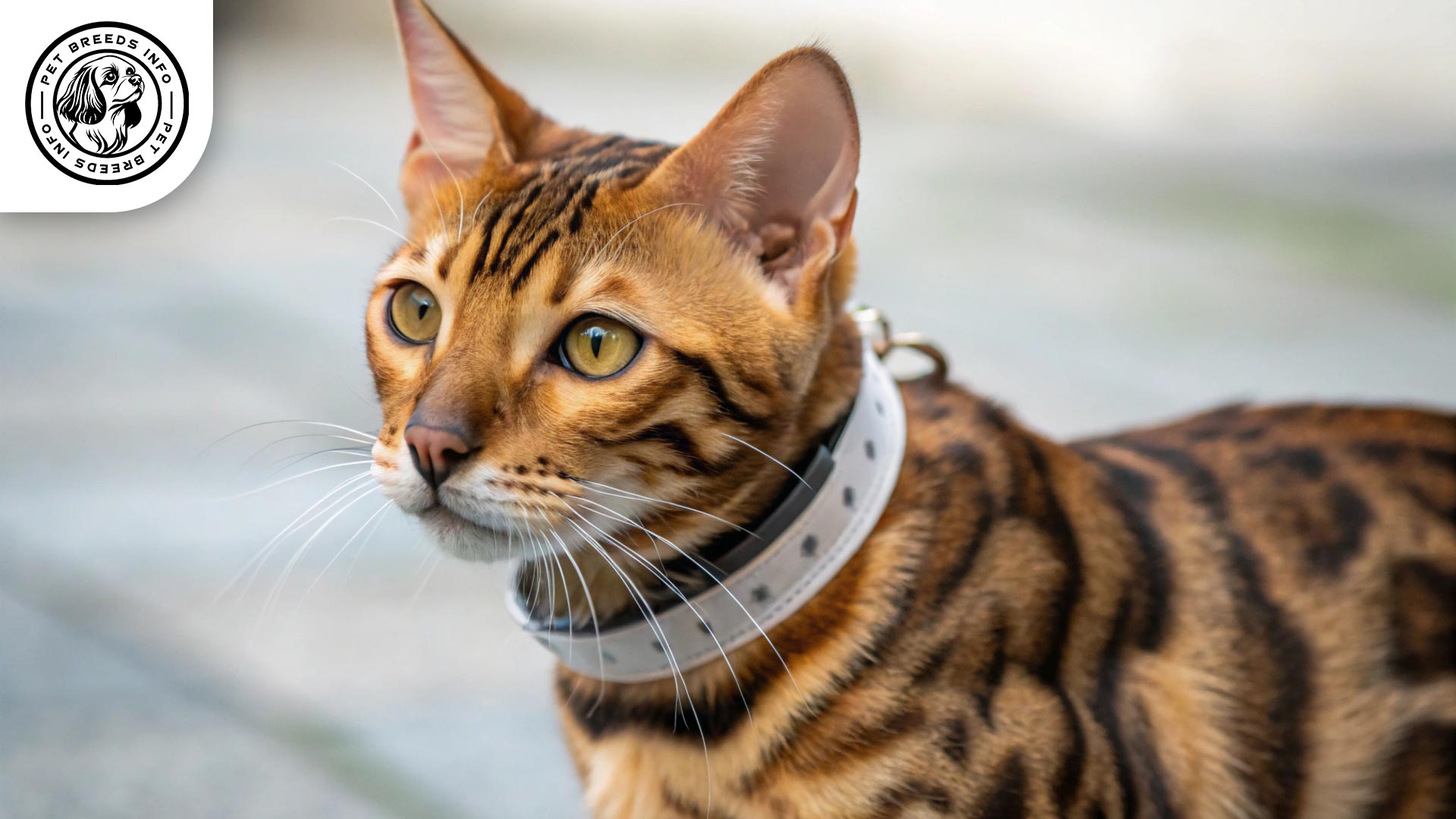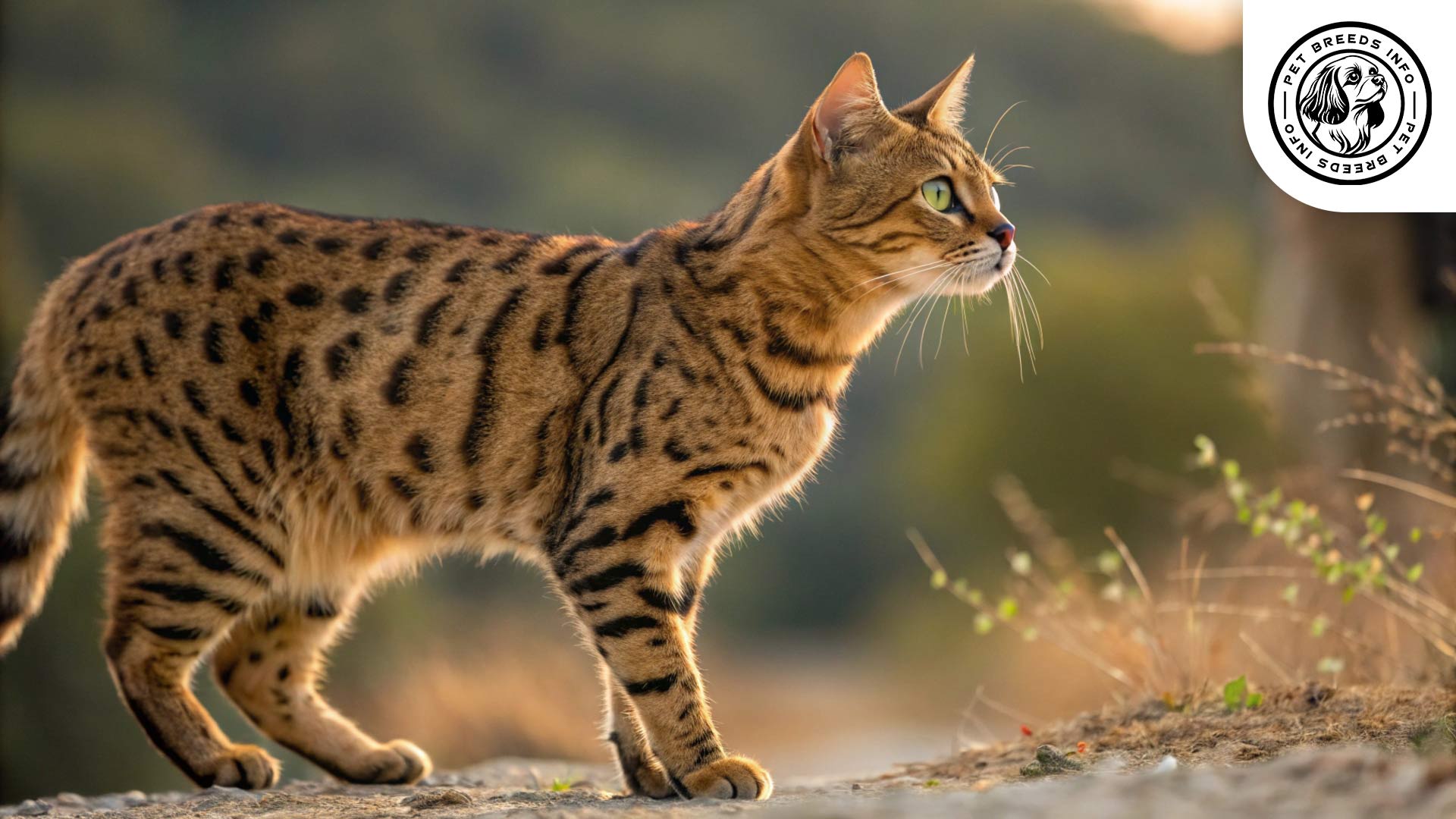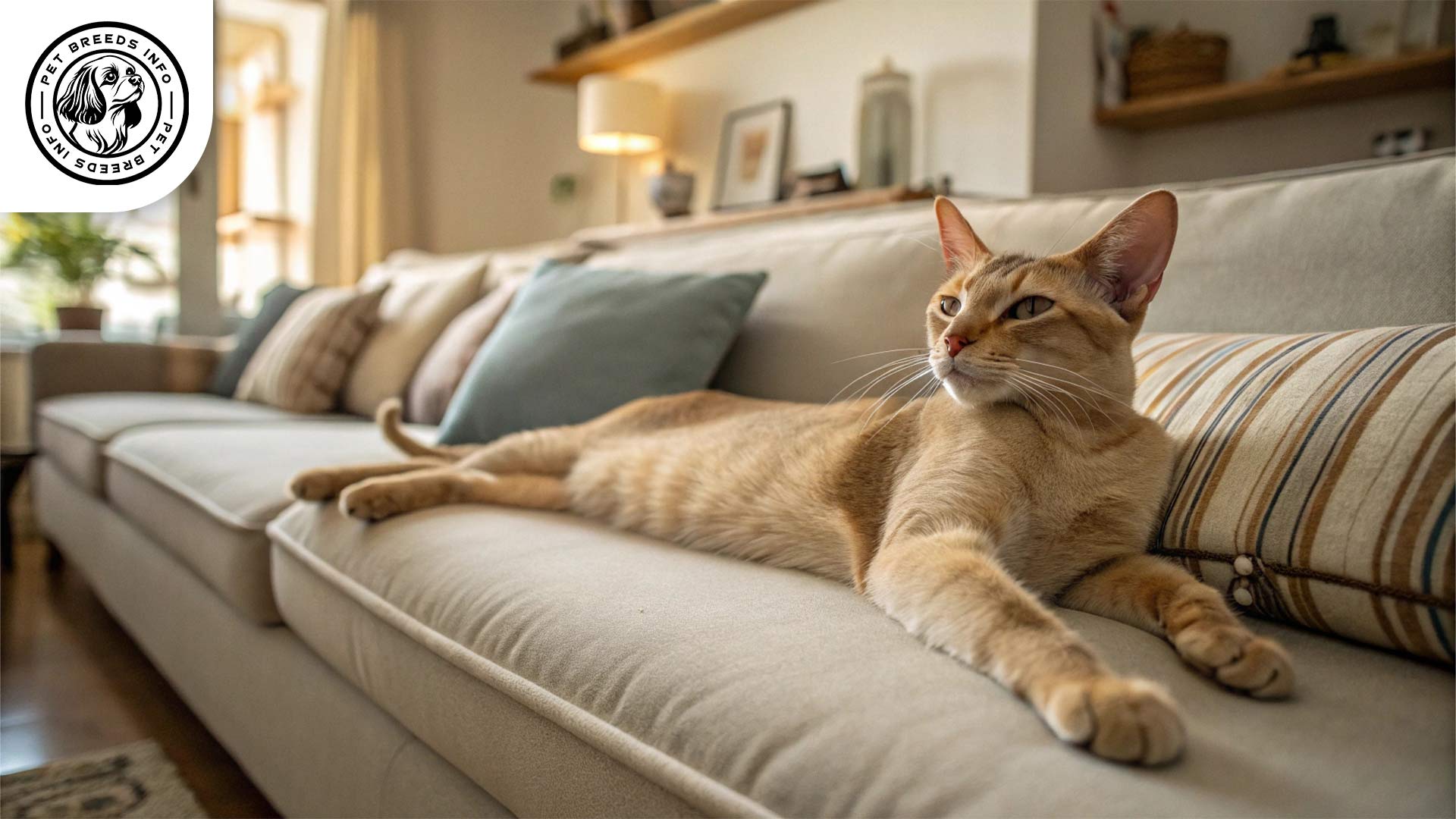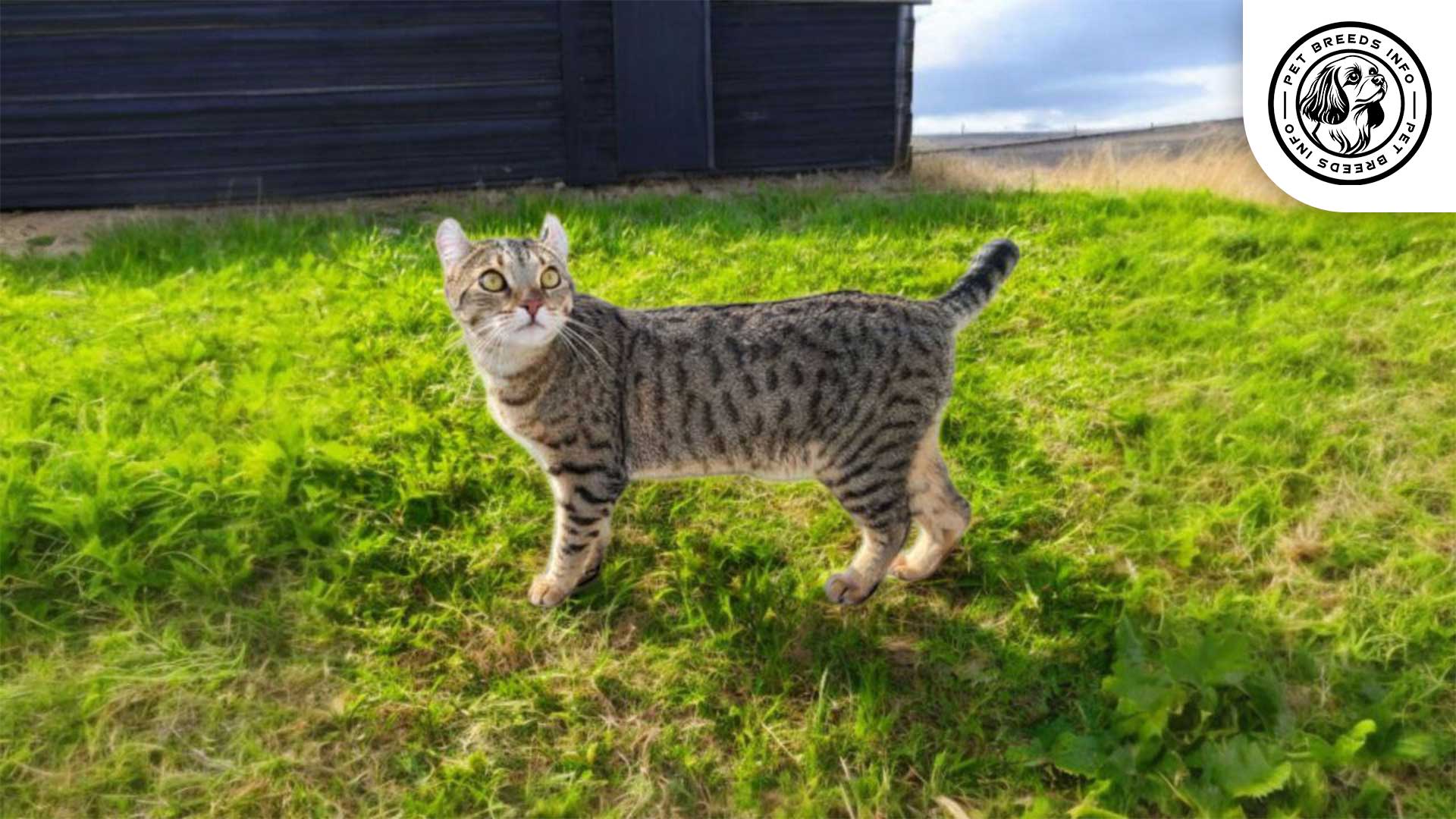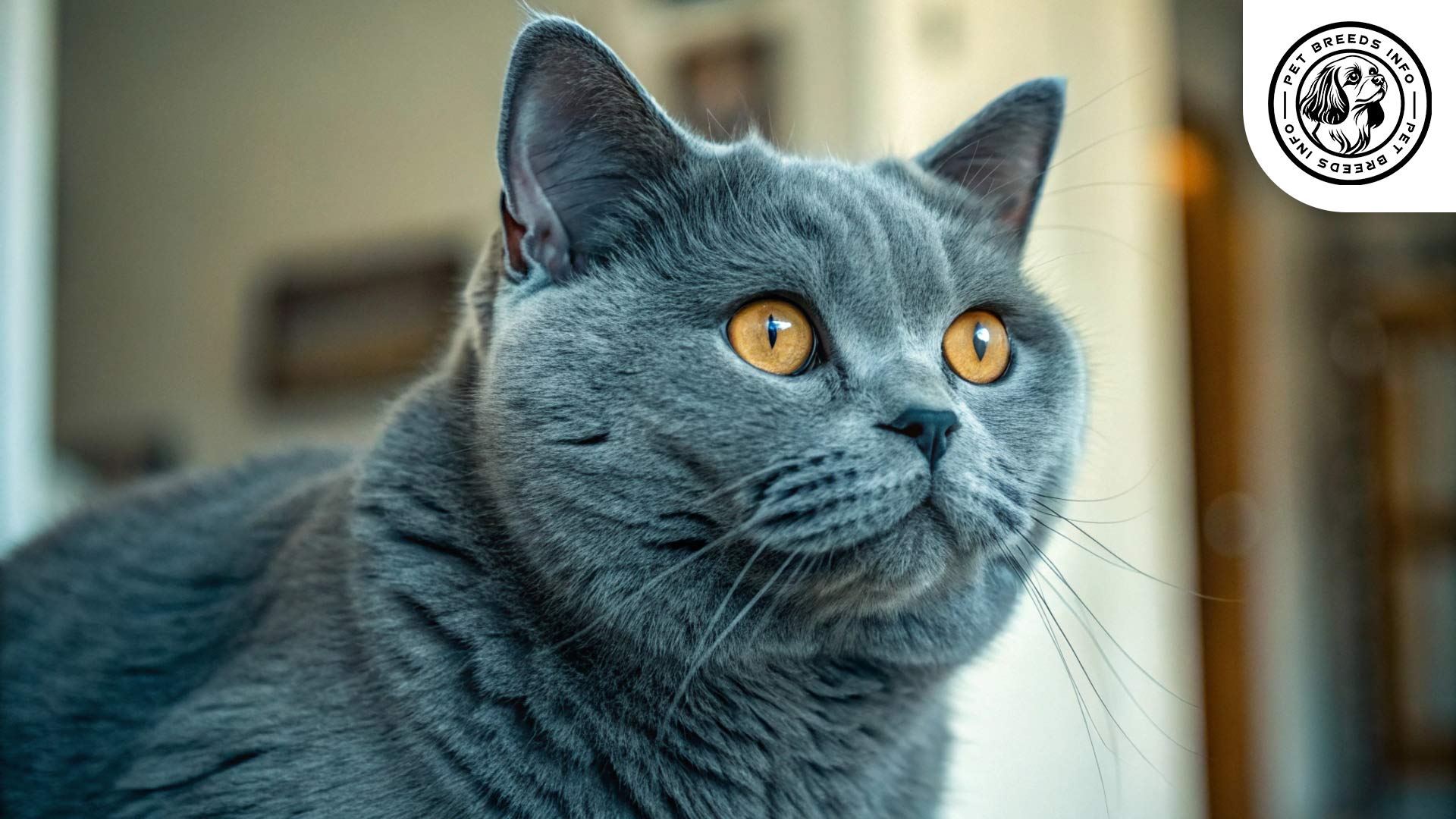Bengal Cat Breed: Size, Health, Price & Personality
General Introduction of the Breed
The Bengal cat, known in English as the Bengal, has no widely recognized alternative names in other languages, though it may be referred to as “Bengalkatt” in Swedish or “Chat de Bengal” in French. This striking breed originates from the United States, where it was developed in the 1960s and 1970s by Jean Mill, a breeder who crossed domestic cats with the Asian leopard cat (Prionailurus bengalensis) to create a feline with a wild appearance and a domestic temperament. The goal was to preserve the exotic look of a wild cat while ensuring a friendly, manageable personality. Today, Bengals are celebrated for their stunning coats and vibrant personalities.
Bengal cats: stunning, energetic, and smart with wild looks. Social, playful, need active homes. Minimal grooming, some health risks. Ideal for engaged owners.Quick Overview
Affectionate - 80%
Independent - 85%
Intelligent - 95%
Sociable - 90%
Vocal - 60%
Shedding - 20%
Energetic - 95%
75%
100
| Common Name | Bengal |
| Scientific Name | Felis catus (domestic cat, with ancestry from Prionailurus bengalensis) |
| Origin | United States, developed in the 1960s–1970s by Jean Mill |
| Size | Medium to large; Males: 10–15 lbs (4.5–6.8 kg), Females: 8–12 lbs (3.6–5.4 kg); Height: 13–16 inches (33–40 cm) |
| Lifespan | 12–16 years with proper care |
| Talking Ability | Not specified in text; generally vocal but not as talkative as some breeds (e.g., Siamese) |
| Colors | Brown, silver, snow, charcoal; marbled or spotted patterns with glitter-like sheen |
| Noise Level | Moderate; vocal during play or when seeking attention, but not overly noisy |
| Social Behavior | Highly social; bonds closely with owners, good with children and pets if socialized early |
Table of Contents
Physical Characteristics
Bengal cats are medium to large in size, with males typically weighing between 10-15 pounds (4.5-6.8 kg) and females ranging from 8-12 pounds (3.6-5.4 kg). They stand about 13-16 inches (33-40 cm) tall at the shoulder. Their coat is short, dense, and silky, with a distinctive marbled or spotted pattern that mimics their wild ancestors. Coat colors include brown, silver, snow, and charcoal, often with a glitter-like sheen that sparkles in the light. Their eyes are large, oval, and expressive, typically green, gold, or blue (in snow Bengals). The ears are medium-sized, rounded at the tips, and slightly tilted forward, giving an alert appearance. Their tails are thick, tapering to a rounded tip, often with dark rings or spots. A hallmark trait is their muscular, athletic build, which enhances their agile, wildcat-like movements.
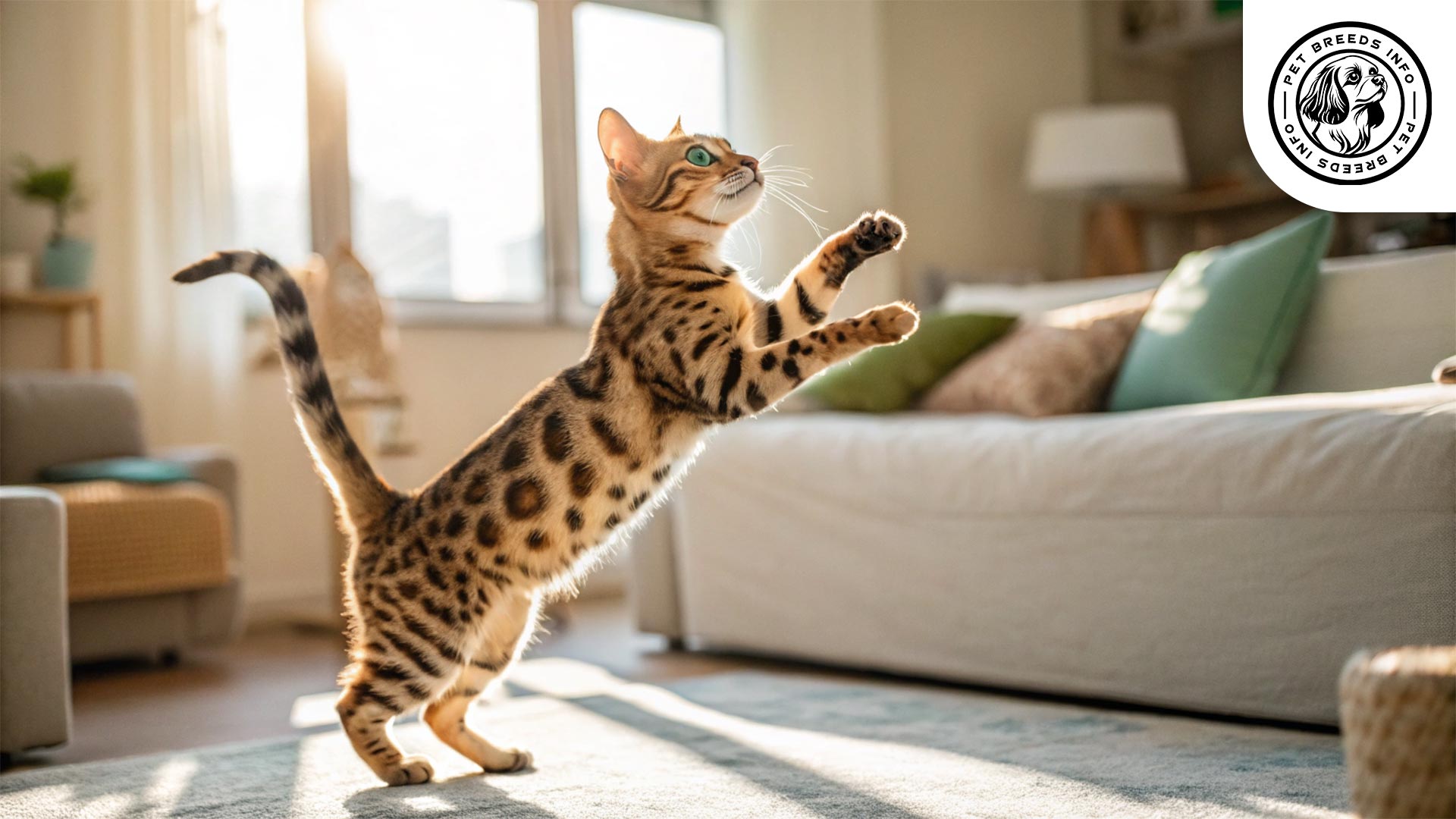
Personality and Temperament
The Bengal cat is highly intelligent and learns commands, tricks, and routines quickly. It is an energetic and playful breed that thrives on physical and mental stimulation. Bengals require a lot of interactive playtime. This breed forms strong bonds with its owners and enjoys companionship, although it is not a typical lap cat. Bengals are social cats that get along well with families, children, and even other pets, provided they are properly introduced. They retain strong hunting instincts and love engaging in activities like chasing, climbing, and exploring. Due to their sensitive nature, they may react to environmental changes and become stressed by sudden disruptions.

Care and Maintenance Requirements
Bengals require daily interactive play sessions to help expend their high energy levels. They can adapt to apartment living if provided with ample exercise opportunities, but they thrive best in homes with more space and climbing structures. Their short coats require minimal grooming, with weekly brushing sufficient to maintain a healthy coat. Bengals are somewhat sensitive to cold temperatures, so they prefer warmer environments. Regular hygiene tasks such as nail trimming, ear cleaning, and dental care are essential to keep them healthy.
Read More: American Wirehair
Diet and Nutrition
A high-quality, protein-rich diet is ideal for Bengals, with wet or raw food often preferred to support their active lifestyle and maintain hydration. Dry kibble can be included but should not be the sole food source. Bengals have no breed-specific dietary restrictions, but their high energy levels require nutrient-dense meals. Avoid feeding them human foods like chocolate, onions, or garlic, which are toxic to cats. Portion sizes depend on the cat’s weight and activity level, typically 3-4 ounces of wet food per meal, with 2-3 meals daily for adults. Consult a veterinarian to tailor portions to your cat’s needs, and always provide fresh water.
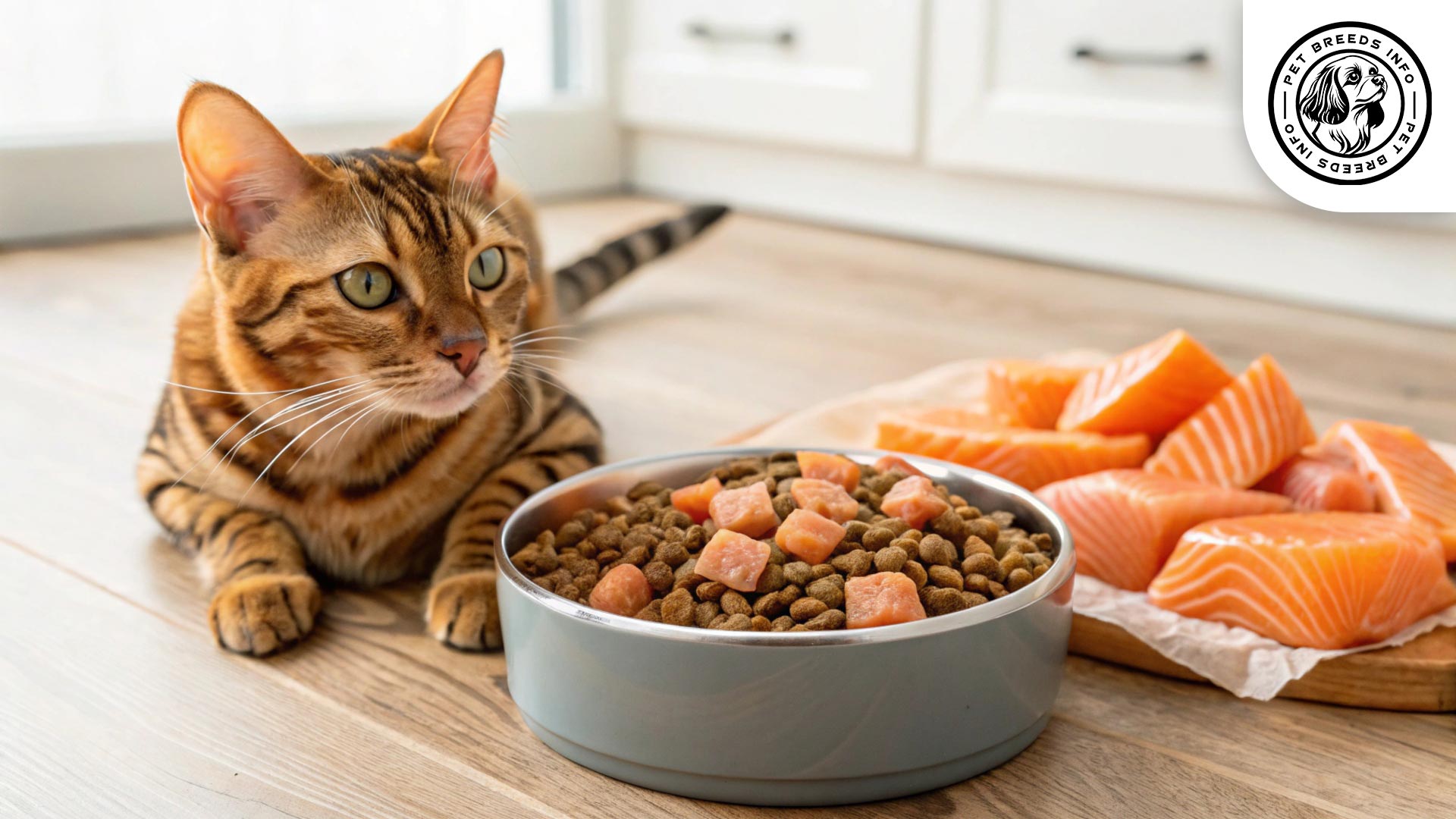
Health and Common Medical Issues
Bengal cats are generally healthy but may be predisposed to certain genetic conditions, including hypertrophic cardiomyopathy, progressive retinal atrophy, and patellar luxation. They may have a sensitive digestive system, requiring careful dietary management. The average lifespan of a Bengal cat ranges between 12 to 16 years with proper care. Routine veterinary check-ups, vaccinations, and parasite prevention are essential to maintaining their health.
Training and Behavior Management
Bengals are relatively easy to train due to their intelligence and curiosity. Start training early with positive reinforcement techniques, such as treats or praise, to encourage good behavior. Socialization from a young age is crucial to ensure they are comfortable with people and other animals. Teaching them to use a scratching post or litter box is typically straightforward, but consistency is key. To manage their high energy, provide engaging toys and activities to prevent destructive behaviors like scratching furniture. Avoid punishment, as it may cause stress; instead, redirect unwanted behaviors to appropriate outlets.
Read More: Ocicat Cat
Interaction with Other Animals and Humans
Bengals are generally good with children, enjoying their playful energy, though supervision is advised with younger kids to ensure gentle handling. They coexist well with other pets, including dogs and cats, especially if socialized early, but their hunting instincts may lead them to chase smaller animals like birds or rodents. Bengals suit both families and individuals, though they thrive best with owners who can devote time to play and interaction. While affectionate, they maintain a degree of independence, balancing closeness with their owners and moments of self-directed exploration.
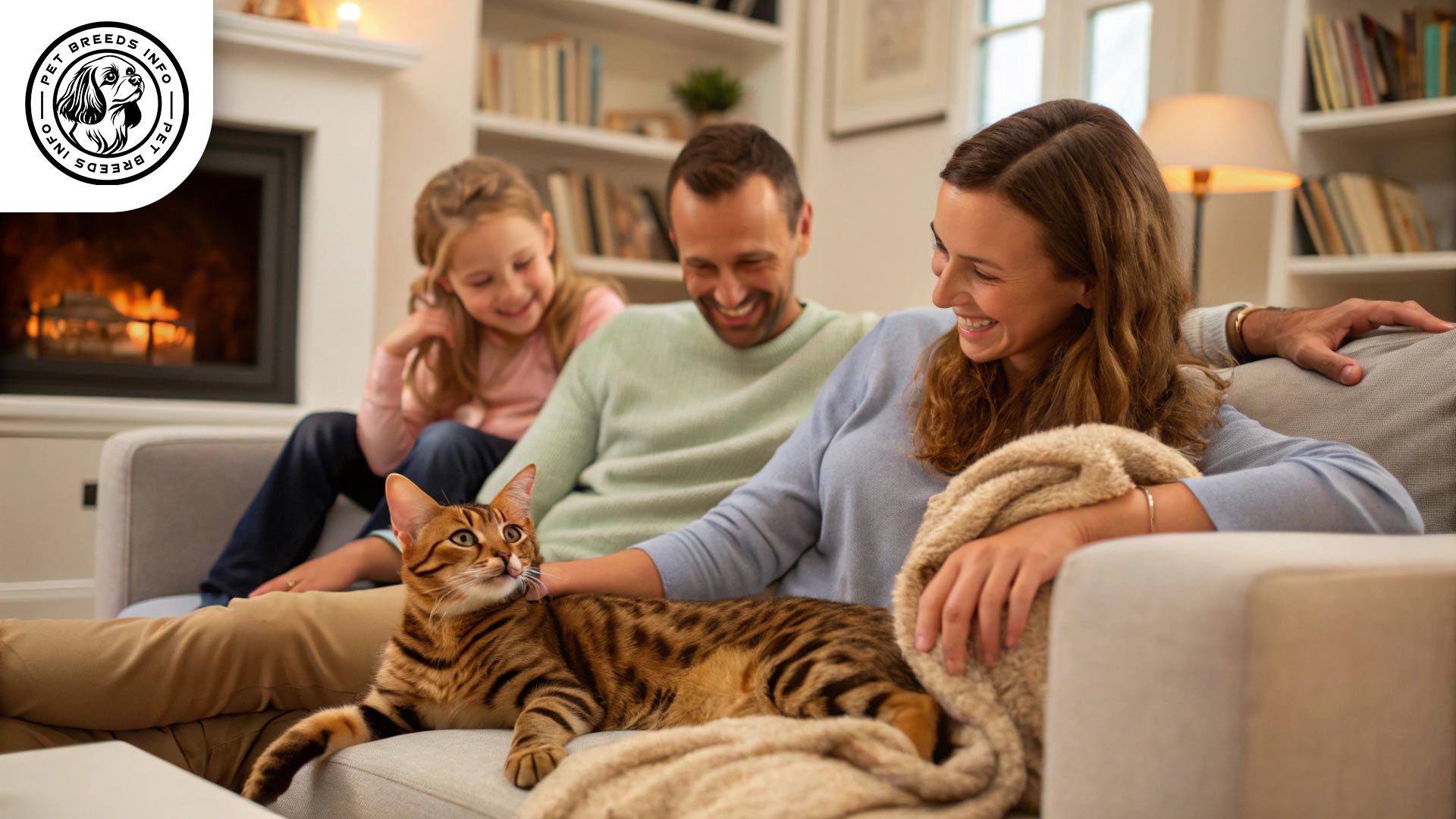
Price and Availability
The cost of a Bengal cat depends on lineage, coat quality, and breeder reputation. Prices typically range from $1,500 to $4,000 for pet-quality Bengals, while show-quality or rare-colored Bengals may cost more. When purchasing a Bengal, it is essential to choose reputable breeders who prioritize health testing and responsible breeding practices. Adoption from shelters or Bengal-specific rescue organizations is an alternative option for those seeking this breed.
Final Thoughts
The Bengal cat is an excellent choice for active, engaged owners who can provide ample playtime and stimulation. Their ideal home includes space for climbing and exploring, with owners committed to meeting their physical and mental needs. Potential owners should consider their high energy, need for interaction, and occasional sensitivity to change before deciding. With proper care, a Bengal can be a loyal, entertaining, and stunningly beautiful companion, bringing a touch of the wild into your home.
Read More: Egyptian Mau Cat
FAQ
Are Bengal cats good with families?
Yes, Bengals are social and playful, making them great for active families with kids or pets if socialized early.
How much exercise do Bengal cats need?
They require 30+ minutes of daily interactive play, like chasing or climbing, to stay happy and healthy.
What health issues do Bengal cats face?
They may be prone to hypertrophic cardiomyopathy, progressive retinal atrophy, and patellar luxation.
Why are Bengal cats expensive?
Their high cost ($1,500–$4,000) comes from selective breeding, health testing, and rare coat patterns.
Do Bengal cats need special grooming?
No, their short coats need only weekly brushing, but regular nail, ear, and dental care is essential.
